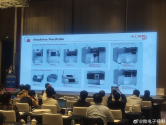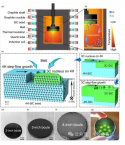Huacan Optoelectronics GaN is fully connected, focusing on 4 major areas
● In terms of gallium nitride devices , BOE Huacan Optoelectronics started in the consumer electronics market and gradually moved towards the medium and high-power power electronics markets such as data centers and industrial vehicles. In this regard, BOE Huacan Optoelectronics has developed a variety of 650V series products. The reserve product voltage is as high as 1200V , covering different power ranges, with a variety of packaging methods, which can match different scenarios such as mobile phone fast charging, computer adapters, and server power supplies. need.
● In terms of self- produced epitaxial wafers , the GaN epitaxial wafers exhibited this time have reached the ideal production level with corresponding device yields. Self-produced GaN epitaxial wafers can achieve better device results and performance parameters. BOE Huacan Optoelectronics has achieved optimization of crack-free HEMT epitaxy on 6/8-inch silicon substrates , and the surface roughness and thickness consistency have reached ideal levels. According to test verification, BOE Huacan Optoelectronics’ GaN epitaxy’s static parameters such as threshold voltage, withstand voltage, gate voltage tolerance, etc. can benchmark against domestic and foreign leading products.
● In terms of its own process lines , BOE Huacan Optoelectronics has a GaN production line, which will be fully operational in 2023 and can realize tape-out from epitaxy to chip. It is expected to achieve an annual production capacity of 12,000 devices in 2024.
● Our own substrate factory, Blue Crystal Technology, has achieved specification optimization and mass production of 6 -inch sapphire substrates, and has also begun product reserves of 8-inch sapphire substrates, which can self- produce high-voltage, cost-effective GaN on sapphire devices in the future. Products pave the way.


